This is instruction of jekyll
Instruction of jekyll
Installing jekyll
sudo gem install jekyll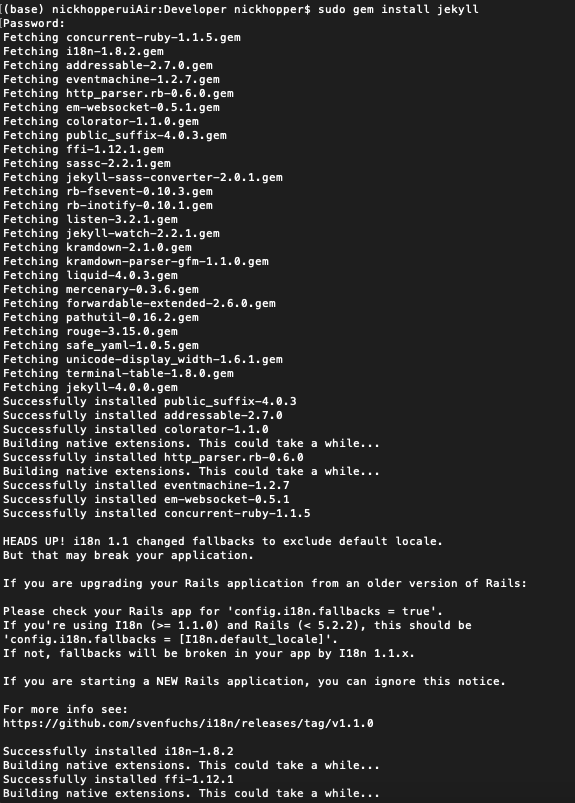
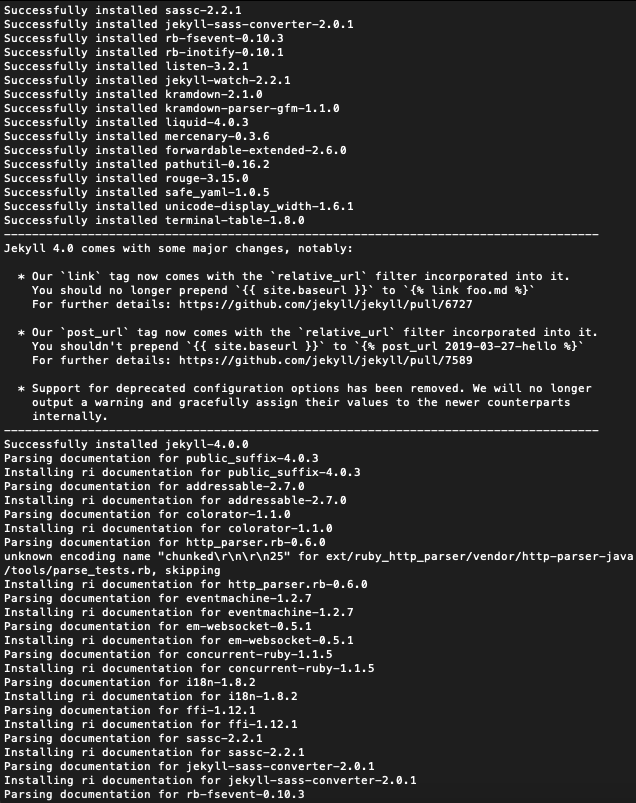
jekyll new mywebsite
sudo gem install jekyll bundler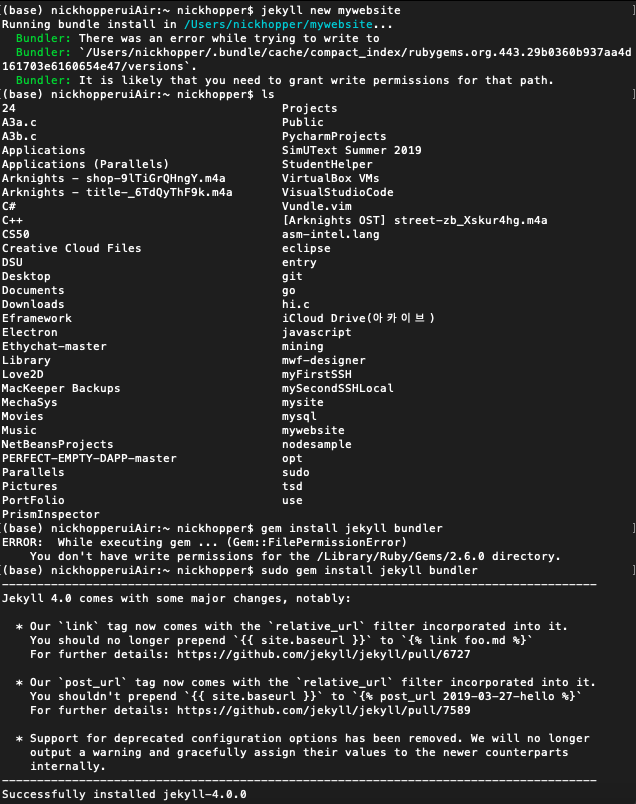
bundle exec jekyll serve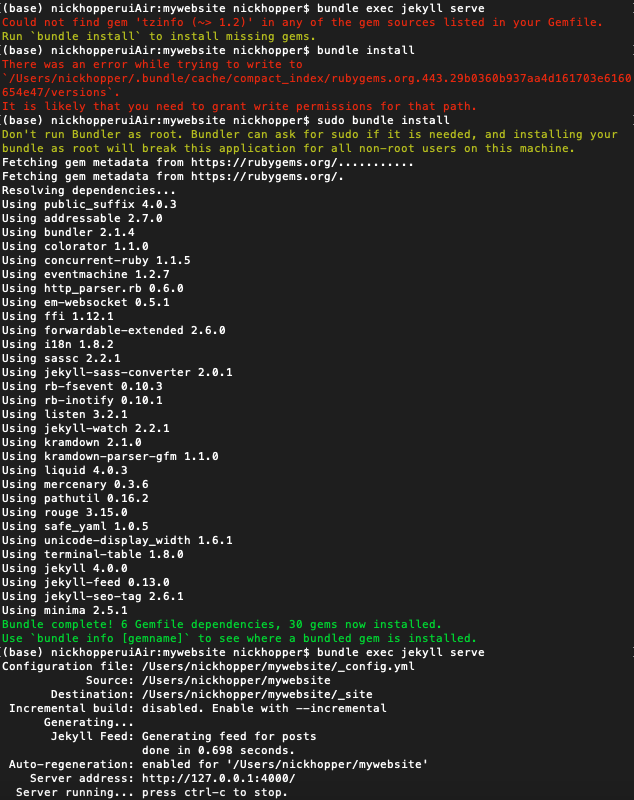
go to localhost:4000 to see your website
Jekyll requires blog post files to be named according to the following format:
YEAR-MONTH-DAY-title.MARKUP
Where YEAR is a four-digit number, MONTH and DAY are both two-digit numbers, and MARKUP is the file extension representing the format used in the file. After that, include the necessary front matter. Take a look at the source for this post to get an idea about how it works.
Jekyll also offers powerful support for code snippets:
def print_hi(name)
puts "Hi, #{name}"
end
print_hi('Tom')
#=> prints 'Hi, Tom' to STDOUT.Check out the Jekyll docs for more info on how to get the most out of Jekyll.
Connect with Git Hub Page(Free Hosting)
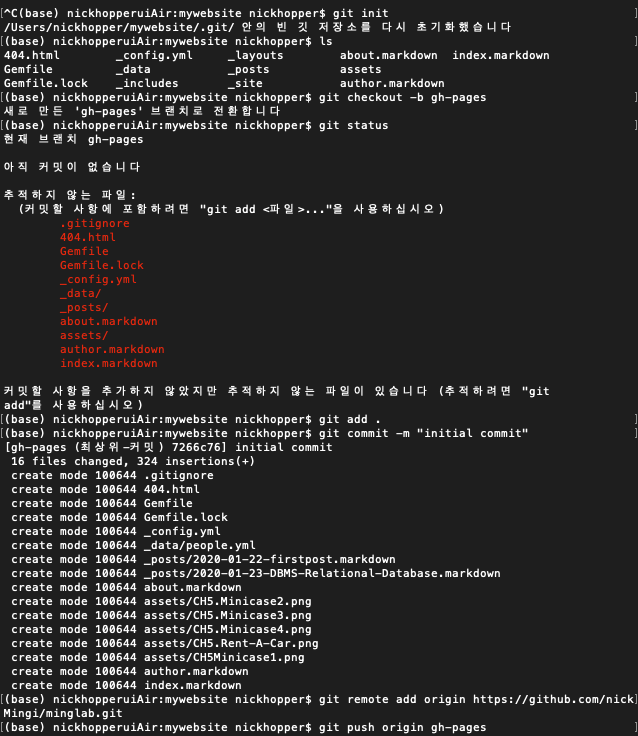
git init
git checkout -b gh-pages
git status
git add .
git commit -m "initial commit"
git remote add origin "my repository url"
git push origin gh-pages